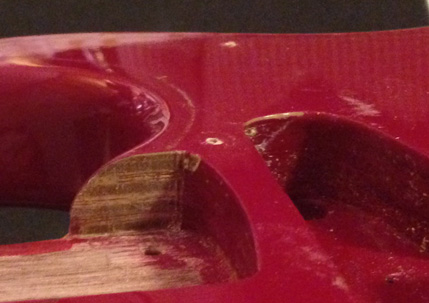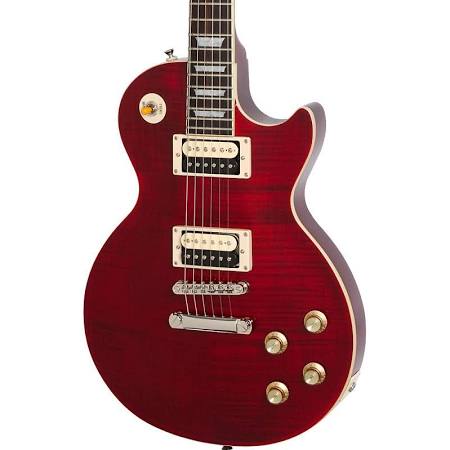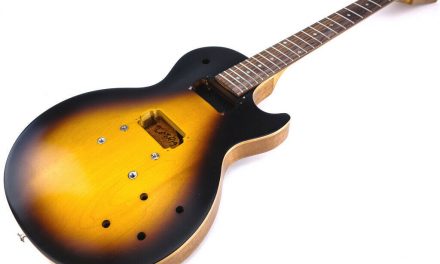If you are obsessed with electric guitars, you know that our world is full of truths, myths, fake stories, bad history, fake science, real science, and on and on. One of the single biggest debates online right now is about “tonewood.” I did a post on tonewood where I summarized my own opinion, but like so many other people, the topic continues to haunt me and drive me nuts. Writing is my way of working through my mixed feelings and emotions on the topic of “tonewood.”
Let me start by saying that if you are an absolutist, if you think the wood always matters a huge amount or you think it never matters, I believe you’re wrong. Actually, I believe you’re an idiot, but I’m trying to be kind. More specifically, it’s idiotic to be an extremist, and I see it constantly in all of the comment sections whenever this topic comes up.
A guy who I really respect is Paul Reed Smith. The guy who makes three thousand dollar guys, yes, THAT guy. If you’ve ever taken the time to watch every video he’s ever appeared in on YouTube, you’ll find that he has spent almost his entire life trying to understand how to build great electric guitars. As one of the top experts in the world, he has an ear that is very, very finely tuned for hearing small differences in everything. So his opinion on whether something makes a “big” difference should be taken with a grain of salt – noticeable to Paul might not be noticeable to you. Or me, for that matter.
But Paul’s opinions are often dismissed because he makes and sells guitars. Which implies that he’s in on this big conspiracy to hide the truth from people that there’s no tonal difference between plywood and swamp ash. But he’s not. Paul believes there’s a difference, based on his experiences spending a lifetime building and playing guitars. To dismiss a man’s opinion and career based on a conspiracy theory is lazy.
However, I do believe that Paul and other high end guitar marketers do exaggerate the differences in wood, as it applies to “normal” guitarists with “normal” ears. All marketers exaggerate. It’s part of marketing. In Paul’s case, as I said, he probably hears the differences you and I can’t. But let’s dig into the topic – plywood bodies.
I bring Paul up because he said something very interesting in one of his videos. He was talking about their process for drying wood. A piece of wood with high water content will not ring when vibrated in as musical a fashion as a piece of wood with low water content. And Paul said, as an aside, that even a piece of plywood rings in a very nice musical fashion when subjected to their treatment. I’m paraphrasing, but that was the overall idea.
Now combine that with something else that Paul said once, which was that the type of wood is not as big a factor in tone as the state of the wood – how low the water content is, how much the resin has crystallized. Put them together and you have an argument that you could make a good sounding guitar body from plywood. You don’t think Paul has tried that, at any point in his life? He’s likely tried everything. Obviously plywood is extremely cheap, and Paul doesn’t want to make cheap guitars. And a plywood body when created using a top notch process will still have other issues that make it a non-factor for the guitars Paul makes.
But I’ve got a Squier II Strat that has a plywood body. Sadly, it wasn’t sent to Paul R. Smith for conditioning. But it’s an interesting thing to have, because it has some very interesting characteristics. My two other Strats have bodies made of alder, as far as I can tell. When I’ve experimented with swapping bodies and necks, I’ve noticed several things about the plywood body – it doesn’t sustain as well, it has a thinner, less pleasing tone, and it’s not very good at holding screws. Yes, it makes a difference. Big enough for me to easily hear. As for my other two Strat bodies, one has a swimming pool route and the other has a HSS route, and to me both bodies sound very similar, but there’s a small difference that’s hard to pinpoint.
I could spend all weekend making a video recording the Strat with the different bodies, but mostly people have already made up their minds, and YouTube does awful things to audio. In the room you can hear a much bigger difference.
My personal theory is that glue hurts tone. A lot of people say no, it doesn’t matter. But without exception, the best sounding guitars in my collection have the fewest pieces of wood. The way the wood was treated also seems to be noticeable in my collection – the biggest example being my Epiphone Les Paul compared to my Gibson Les Pauls. The Epiphone has more pieces of wood and more glue and the wood in it wasn’t subjected to the same kind of process as my Gibsons, and even with the same pickups the difference in sound is noticeable.
That doesn’t mean my plywood Strat and my Epiphone LP can’t sound good in a recording – they absolutely can. Recording technology and amps are both in a great place right now. I could make a good sounding recording with a used Squier Affinity Strat. But I want to make professional sounding recordings, so I want the best sound I can get going into the DAW. Right now, for my fave Strat sound, that means a Fender Strat made of parts (American Neck, MIM body, upgraded nut and bridge saddles, Texas Special pickups) going into a Keeley 4 knob compressor, into a Wampler Plexi-Drive, into a Peavey Valveking Micro tube amp head. Those are the best ingredients I own.
(UPDATE – As of now, I have my Strat going into the Keeley 4 knob and then into my Fender Bassbreaker 7 watt head. And IT sounds better than my previous setup. The Bassbreaker amps are amazing.)
But it’s important to note that I use MIM bodies in my partscasters, not American. This is due to cost – MIM bodies sound good and are semi-inexpensive, and are usually made of 3 to 4 pieces of wood. American bodies are usually made of 2 to 3 pieces of wood. If I’m truly chasing tone, shouldn’t I upgrade to an American body, or a body of similar higher quality? Yes, I should. But it’s too costly. Still, I’m always on the lookout for good strat parts. I’d love to get an American body and see if I could tell the difference.
So I’ve got a line in the sand where I think the wood matters, like everyone else. And I think most players have a line, usually different than mine but sometimes the same. Tone is extremely subjective. But absolute positions are almost always a bad idea.





